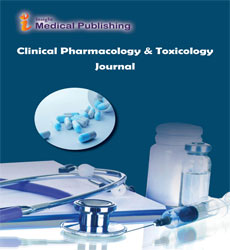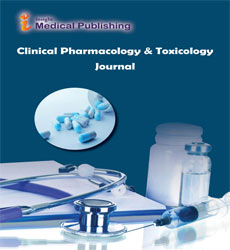Announcement of 19th International Conference on Drug Delivery
Abstract
Meetings International presents 19th International Conference on Drug Delivery, scheduled on September 23-24, 2022 in Osaka, Japan which will allow the professional to characteristic their exploration of work through introductions and have a probability to select up mastering about the present condition of pharm industry. Drug delivery conference seems to be the constantly trending subject matter with modern day research technologies. Everyone who explores to strengthen their knowledge and gain extended about advanced research is welcome to present/get new ideas. This topic area welcomes submissions that demonstrate the diversity of a current trending research in pharmacology; drugs have long been used to improve health and extend lives. The practice of drug delivery has changed dramatically in the past few decades and even greater changes are anticipated in the near future. Biomedical engineers have contributed substantially to our understanding of the physiological barriers to efficient drug delivery, such as transport in the circulatory system and drug movement through cells and tissues; they have also contributed to the development several new modes of drug delivery that have entered clinical practice.
Drug delivery is the method or process of administering a pharmaceutical compound to achieve a therapeutic effect in humans or animals. For the treatment of human diseases, nasal and pulmonary routes of drug delivery are gaining increasing importance. These routes provide promising alternatives to parenteral drug delivery particularly for peptide and protein therapeutics. For this purpose, several drug delivery systems have been formulated and are being investigated for nasal and pulmonary delivery. These include liposomes, proliposomes, microspheres, gels, prodrugs, cyclodextrins, among others. Nanoparticles composed of biodegradable polymers show assurance in fulfilling the stringent requirements placed on these delivery systems, such as ability to be transferred into an aerosol, stability against forces generated during aerosolization, biocompatibility, targeting of specific sites or cell populations in the lung, release of the drug in a predetermined manner, and degradation within an acceptable period of time.
Drug delivery has the potential to have a tremendous impact on treatment of retinal diseases. There are a large number of drugs that are reasonably effective to treat retinal conditions, but those drugs are limited by delivery issues such as the need to have the molecule cross the blood–eye barrier, be present for long times, or the need to mitigate side-effects. The challenges of having drugs at a physiologically relevant concentration for extended periods or in a localized delivery system are challenges that can be solved with drug delivery technology, whether it is using cellular delivery systems, microelectromechanical (MEMs)-based devices, polymer matrices, or gene delivery systems.

Open Access Journals
- Aquaculture & Veterinary Science
- Chemistry & Chemical Sciences
- Clinical Sciences
- Engineering
- General Science
- Genetics & Molecular Biology
- Health Care & Nursing
- Immunology & Microbiology
- Materials Science
- Mathematics & Physics
- Medical Sciences
- Neurology & Psychiatry
- Oncology & Cancer Science
- Pharmaceutical Sciences
